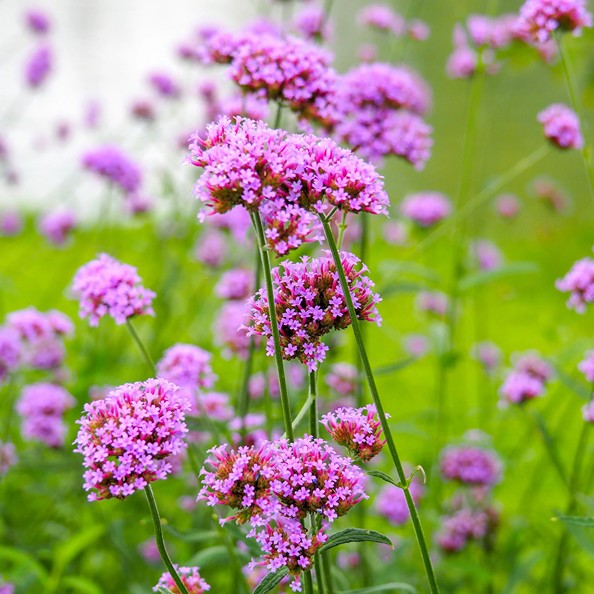How to Care for Verbena Plant: Fine Tips
Verbena, a flowering plant known for its continuous blooming, adds beauty to various areas such as rock gardens, trellises, walls, and containers. Its versatile nature makes it an ideal choice to adorn retaining walls, containers, baskets, and window boxes. As long as the soil is well-drained, gardeners can expect verbena to flourish with abundant clusters of blooms throughout the entire season. Additionally, verbena exhibits drought tolerance, making it a superb option for rock gardens and for filling the gaps between stones.
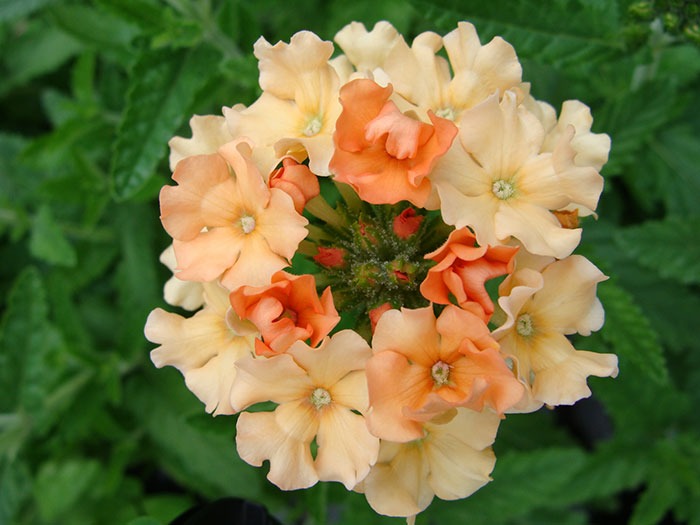
The flowers of verbena plant are arranged in perpetual blooming circles, situated atop the tips of the stems. These floral stalks continue to bloom ceaselessly, constantly growing and producing new buds. This remarkable characteristic eliminates the need for deadheading, as the new blossoms emerge on top of the withered flowers. The petals of verbena flowers display a captivating variety, ranging from fringed edges, striped patterns, white centers, to even streaks of vibrant colors.
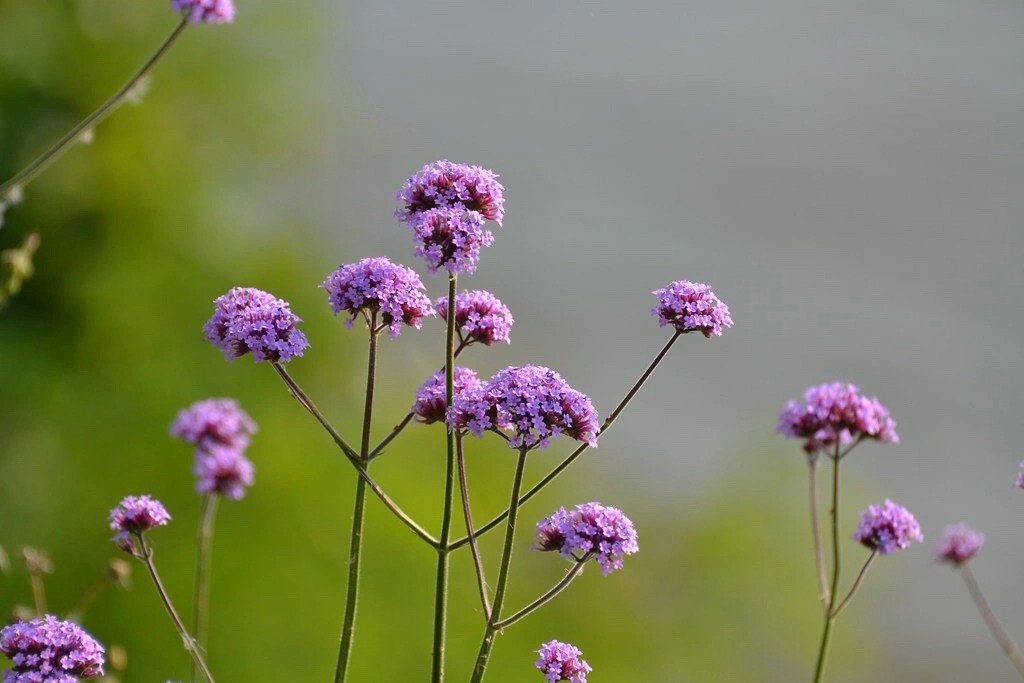
Planting Locations for Verbena
To ensure an abundant and continuous display of blooms, verbena thrives in locations that receive a minimum of eight hours of direct sunlight. It flourishes best in moderately fertile soil that drains well, allowing for proper moisture management. Verbena’s versatile nature allows it to be planted in various settings, such as climbing fences and trellises, where it can gracefully drape and create a stunning visual effect. Furthermore, it can be elegantly cascaded from hanging baskets, while also finding contentment in rock gardens or serving as a groundcover. Certain varieties of verbena exhibit an upright growth habit, making them a suitable choice for smaller spaces and containers. Although verbena is typically grown as an annual plant in many regions, it demonstrates hardiness in Zones 7-9, allowing it to endure winter conditions in these areas.
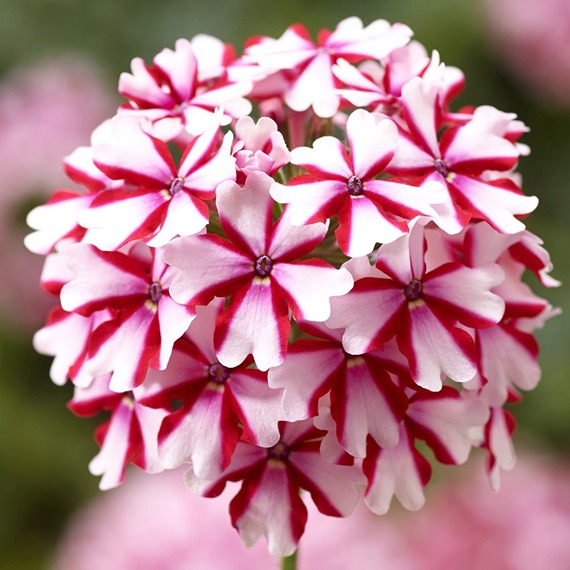
Planting Method and Timing
To successfully plant verbena, it is recommended to wait until spring when the risk of frost has subsided entirely. Prepare the garden bed by loosening the soil to a depth of 12 inches, ensuring proper drainage for the plants. When spacing the verbena plants, maintain a distance of 12 to 18 inches between each plant to allow for healthy growth and ample air circulation. Prior to planting, carefully remove the verbena plants from their pots and inspect the roots. If the roots appear tightly bound, gently loosen them to encourage healthy expansion.
When transplanting, ensure that the verbena plants are placed in the ground at the same depth as they were in their nursery containers. This will promote stability and allow the plants to establish themselves effectively. It is crucial to provide regular watering to the newly planted verbena until they have established a strong root system. This will aid in their successful adaptation to the garden environment and support their initial growth stages.
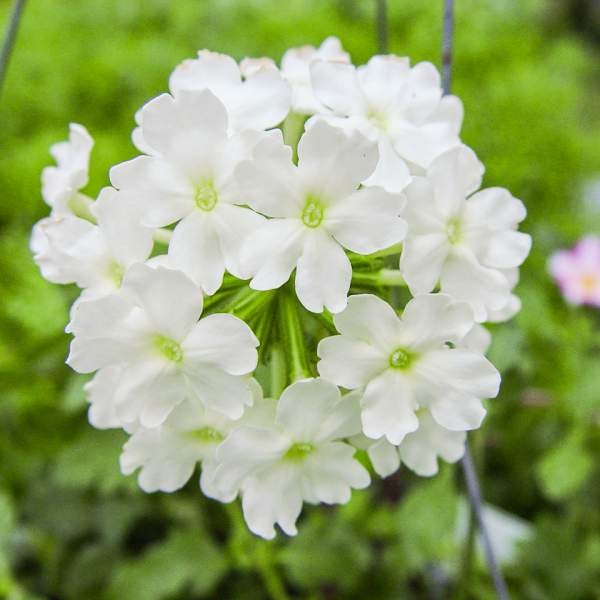
Tips for Caring
Light Requirements
Choose a planting location for verbena that receives a generous amount of sunlight, ideally 8 to 10 hours per day. While the plant can survive with as little as 6 hours of sun, it may not produce an abundance of flowers without sufficient sunlight.
Soil and Watering
Ensure that the soil in which verbena is planted has proper drainage. If the soil tends to retain water and is not well-draining, it is advisable to amend it with compost or leaf mold before planting. Verbena is adaptable to various soil conditions, but excessive moisture is not favorable for its growth. Once the plants are established, their water requirements are moderate. Providing approximately an inch of water per week is generally sufficient. Verbena can also endure short periods of drought without significant harm.
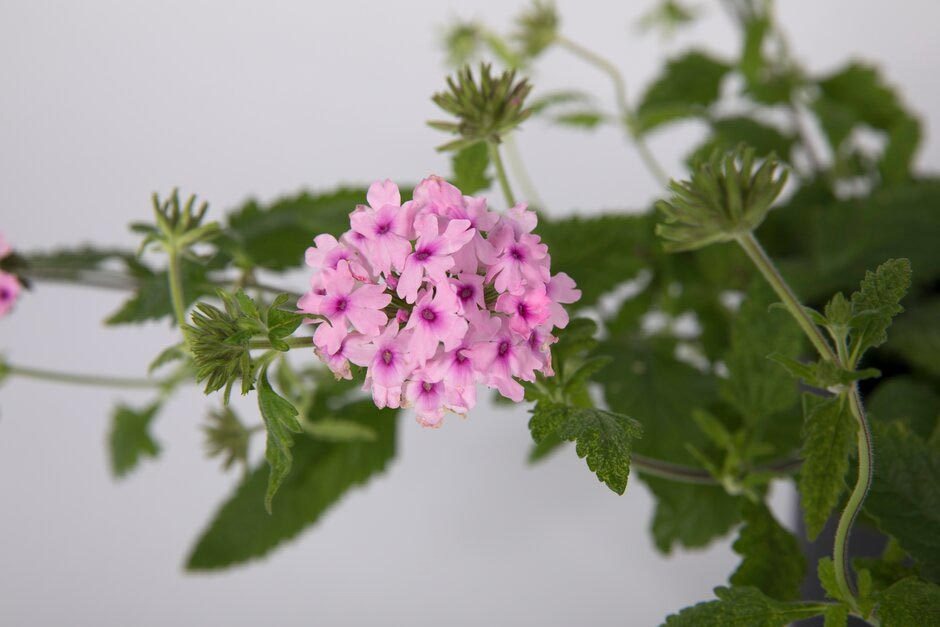
Temperature and Humidity
Verbena plants thrive in cooler weather conditions. They showcase their blooming prowess in spring, preceding most other flowering plants in a garden, and then again in autumn as the weather starts to cool down. During the intense summer heat, their display of flowers may diminish.
In general, verbenas are not particularly fond of hot and humid climates. Annual varieties of verbena may struggle to perform well in summers characterized by high temperatures and excessive humidity.
Fertilizer
To provide adequate nutrition for verbena plants, it is typically sufficient to apply a fertilizer with a 3-1-2 ratio, such as 16-4-8, during late spring. Another round of fertilizer can be applied after trimming back the plants. However, if the plants are growing in poor-quality or sandy soil, additional fertilization may be necessary. It is essential to follow the instructions provided on the product label for the recommended amount to use.
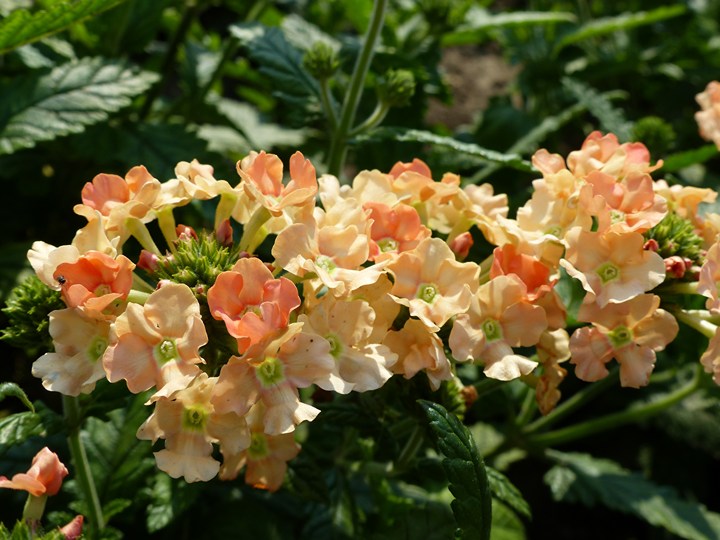
Pruning
During the arrival of summer heat, annual verbenas may experience a decrease in blooming or exhibit leggy growth. To improve their appearance and promote autumn blooms, it is advisable to trim up to one-third of the plant. However, exceeding this amount should be avoided. This pruning technique helps maintain a more compact and appealing shape.
When cultivating verbenas as perennials, it is recommended to cut back the old stems of the plant to a height of 2 inches before the onset of new growth in spring. This practice encourages the plant to produce fresh growth and ensures a healthier overall appearance.
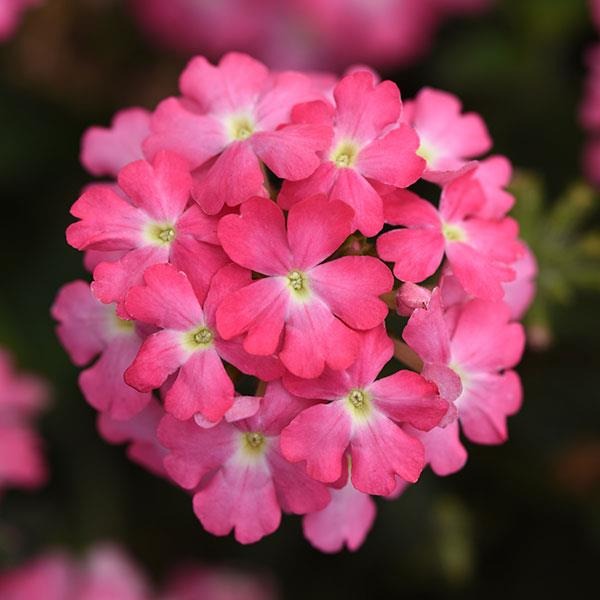
Pests and Problems
When it comes to problems, verbenas are generally resilient against diseases. However, one notable concern is the occurrence of mildew, which manifests as a powdery white residue on the leaves, eventually leading to a gradual decline in the plant’s vitality. While mildew typically doesn’t result in the death of a plant, it can cause some stress and impede its growth.
The most effective solution to combat powdery mildew is to select a planting location for verbena that allows for good air circulation. It is crucial to ensure that the plant’s leaves have ample opportunity to dry out thoroughly after rainfall or watering. If powdery mildew has been an issue in the garden previously, it is advisable to remove any old plant debris, such as dead leaves or stems, from the ground. This proactive measure of cleaning up old material serves as an excellent preventative approach. Additionally, it is recommended to rotate the placement of susceptible plants each year, avoiding the repetition of planting them in the same spot consecutively.

Propagating Verbena
If you are interested in cultivating annual verbenas in your garden or containers, they can be propagated from seeds. However, when dealing with hybrid varieties, a more suitable method of propagation is through stem cuttings, as this ensures that the resulting seedlings are identical to their parent plants.
To start verbena from seeds, it is recommended to do so in spring. Sprinkle the seeds over topsoil that is rich in nutrients and well-draining, without covering them. Ensure that the soil remains consistently moist, and within a few weeks, the seeds will germinate, initiating the growth process.
For propagation through stem cuttings, it is advisable to begin the process in late spring. Select a stem that is approximately 3 inches in length and does not possess any flowers. Remove all leaves except for the top one or two sets, and plant the cutting in a small pot filled with a moist and well-draining planting medium. To create a favorable environment for rooting, place the pot with the cutting inside a clear plastic bag. After approximately six weeks, the stem will initiate root growth, establishing a new plant.
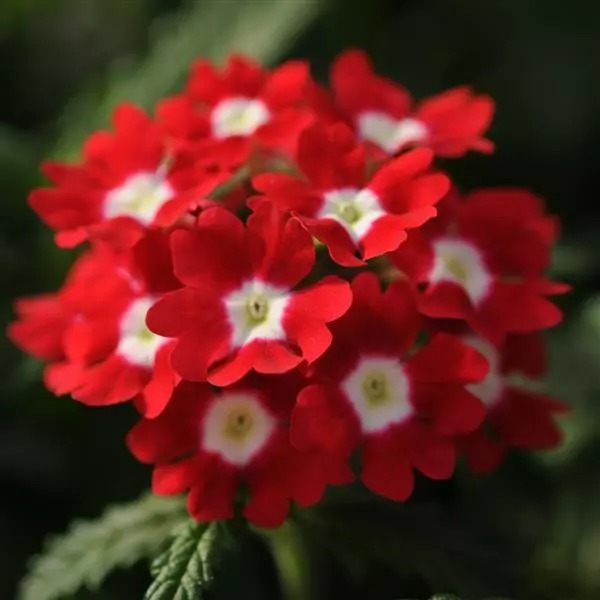
Types of Verbena
There are various types of verbena available, many of which are hybrids resulting from the combination of different species. Here are some notable verbena varieties:
- Aztec Red Verbena
This type features rich red flowers with a creamy center. It has a spreading habit, reaching a size of about 12 inches.
- Babylon White Verbena
This trailing plant produces pure white flowers and is known for its improved disease resistance compared to other verbenas.
- Fuego Dark Violet Verbena
A robust selection, this verbena showcases clusters of large violet-purple flowers and exhibits excellent heat tolerance.
- Fuego Pink Verbena
This variety boasts vibrant pink flowers on a vigorous spreading plant.
- Fuego Red Verbena
A fast-growing type that displays striking clusters of brilliant red flowers.
- Imagination Verbena
Popular for its deep violet-purple blooms, this variety grows 8 to 12 inches tall and thrives when planted in hanging baskets.
- Lanai Lavender Star Verbena
Featuring clusters of lavender-purple flowers striped with white, this verbena reaches a height of 10 inches and spreads up to 24 inches.
- Lascar Burgundy Verbena
With medium-sized burgundy-red flowers, this verbena forms a mounding growth habit.
- Peaches and Cream Verbena
A visually stunning option, this variety showcases peach and creamy-white blooms. It grows 8 to 10 inches tall and spreads approximately 12 inches.
- Quartz Purple Verbena
This upright and compact plant produces rich purple flowers, reaching a height of 8 inches.
- Quartz Silver Verbena
An upright and compact variety, it bears white flowers with silvery lavender tones. It grows 8 inches tall and wide.
- Temari Patio Red Verbena
Known for its bright red flowers, this verbena forms mounding plants that reach a height of 14 inches.
- Summer Snow Verbena
This trailing selection grows up to 10 inches and showcases pure-white blooms.
- Superbena Pink Parfait Verbena
This verbena offers soft-pink flowers over fuzzy foliage, exhibiting resistance to diseases. It grows 12 inches tall and spreads up to 48 inches.
- Superbena Large Lilac Blue Verbena
A vigorous selection with good disease resistance, this verbena produces large lilac-blue flowers. It reaches a height of 12 inches and can spread up to 4 feet as a groundcover or trail over the sides of containers and hanging baskets.
- Superbena Burgundy Verbena
This robust selection showcases rich burgundy flowers from spring to fall. It grows 12 inches tall and spreads up to 4 feet as a groundcover or trailing plant.
- Tropical Breeze Red and White Verbena
This variety exhibits good resistance to powdery mildew and features white flowers with streaks of red.
- Tukana Scarlet Star Verbena
Noteworthy for its large bright red flowers with a sparkling white eye, this heat-tolerant verbena blooms throughout the summer. It grows 8 inches tall and spreads up to 24 inches wide.
- Temari Bright Pink Verbena
With soft pink flowers adorned with tiny white eyes, this trailing verbena extends up to 1 foot.
- Verbena bonariensis
A tall, prairie-type verbena with purple blooms that readily reseeds itself in the garden.
